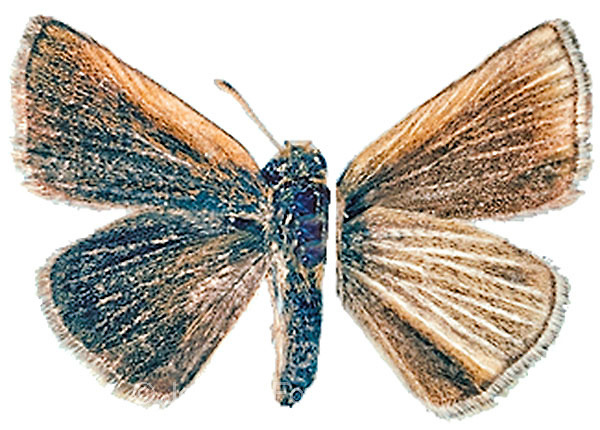Federal listing protection has been finalized for two Midwest prairie butterfly species under the Endangered Species Act (ESA) due to dramatic population declines. The Dakota skipper has been listed as a threatened species, and the Powershiek skipperling has been listed as an endangered species under the act, according to a final rule published Friday. The rule also specifies a special 4(d) exemption for the threatened skipper. The listing is the result of a 2011 settlement agreement between the U.S. Fish and Wildlife Service and the Center for Biological Diversity (CBD), one of the agency's most frequent litigants. The settlement created a five-year work plan to speed listing decisions for hundreds of species across the country. "It is great news that these remarkable little butterflies now have the Endangered Species Act protection that will save them and their beautiful prairie homes," Tierra Curry, a CBD senior scientist was quoted as saying in the group's response to the listing. "Protecting the last high-quality prairie habitats for the butterflies will keep these special places safe, along with all the other plants and animals that need them to survive."
According to last year's listing proposal, the skipper was first identified as a candidate species in 1978, while the skipperling was not identified as a candidate species until 2011. The skipper has disappeared from 75 percent of its historic range and the skipperling has vanished from 96 percent of the areas where it was previously found, according to the agency's statement.
The butterflies face a variety of threats, including the loss of native prairie to agriculture and development, altered fire patterns, loss of groundwater, pesticide use and climate change. They are also stressed by "unknown" factors, the agency said, that might be a combination of the known threats or something not yet identified, such as a virulent pathogen or parasite. "These declines are reminiscent of the widely publicized decline of honey bees in that they seem sudden and mysterious," the agency said in the action.
Both butterflies are small, with brown and orange coloring. The skipper is thick-bodied, while the skipperling is slender. In the United States, the skipper is now found only in Minnesota, and parts of North and South Dakota. The skipperling survives in small populations in Wisconsin, Michigan and Manitoba.
The final listing includes a Section 4(d) exemption under the ESA that allows harm to the threatened Dakota skipper associated with livestock ranching practices. The exemption is not allowed for the endangered skipperling.
"We recognize the reason we still have any Dakota skippers or Poweshiek skipperlings on the landscape at all is the conservation ethic of ranchers who have had the foresight to conserve grasslands in the Upper Midwest," USFWS Midwest Regional Director Tom Melius was quoted as saying in the agency's press release. "Our hope is to continue to work with landowners and partners to conserve these butterflies and the valuable habitat they depend upon."
The 2013 listing proposal also included over 39,000 acres of critical habitat for the butterflies. The USFWS expects to finalize the critical habitat designation and an economic analysis at a future date.
The listing is effective Nov. 24
Source: Courthouse News, October 27, 2014
http://www.courthousenews.com/2014/10/27/72829.htm

- Log in to post comments
